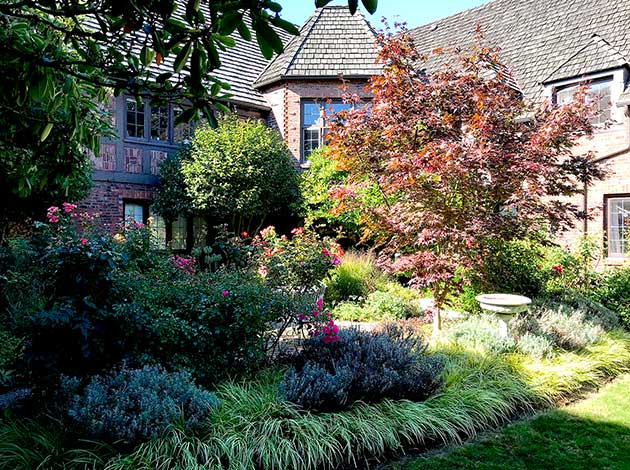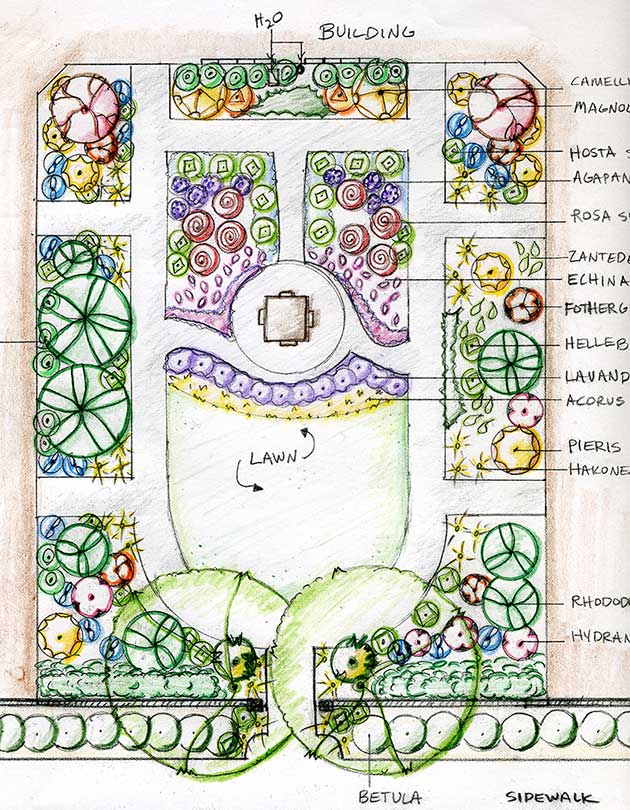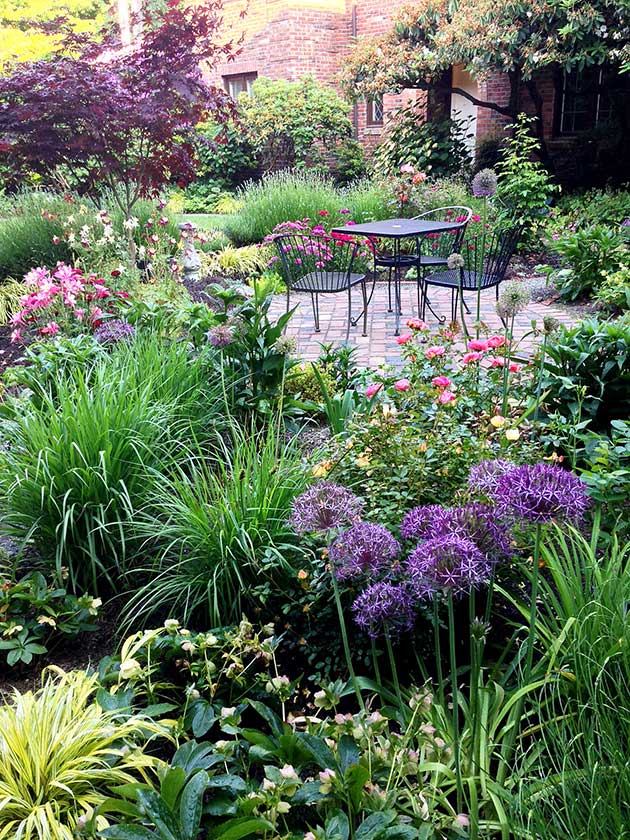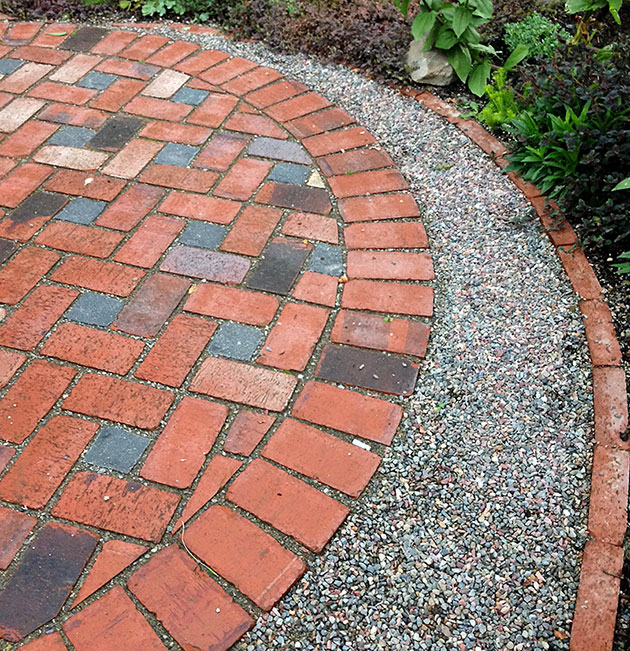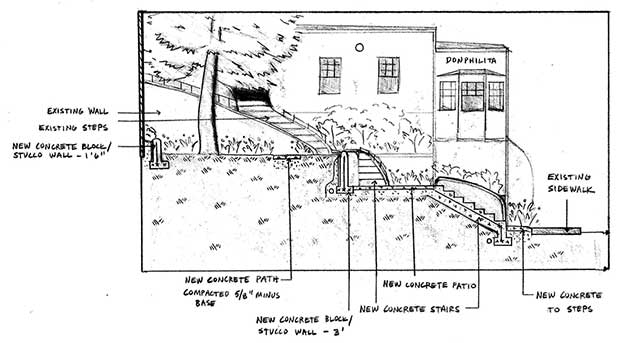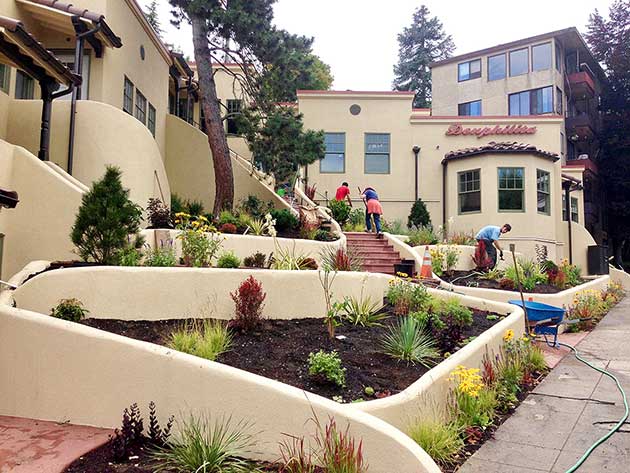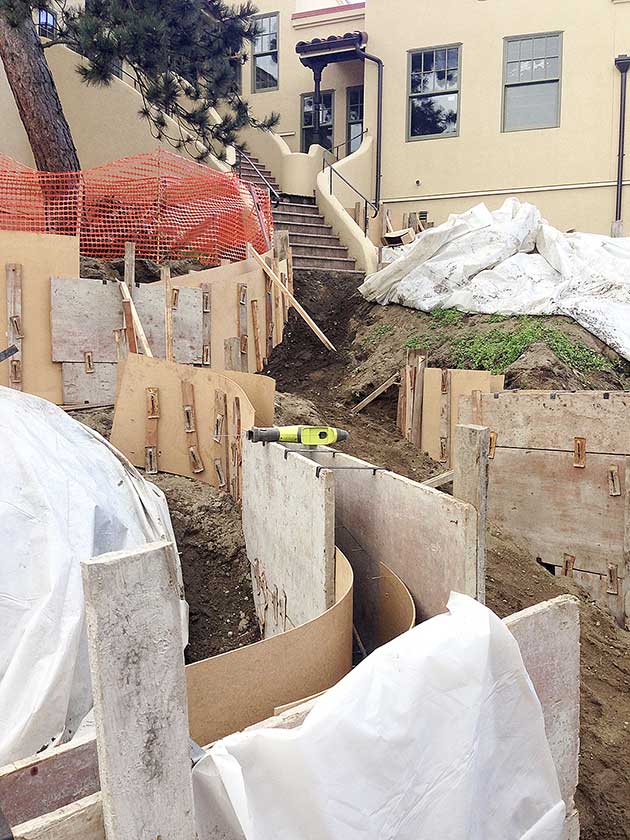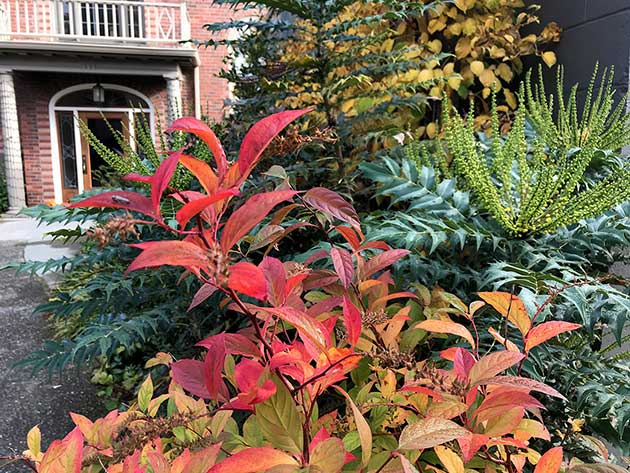APLDWA Featured Designer:
Corinne Hollister
Earth Dance Design - SeattleMember since 2010

Corinne Hollister from Earth Dance Design
Photo by John Cornicello
When did your career as a designer start? Describe your path from then to now.
I strayed from my first career in journalism about 20 years ago. And I started in maintenance. It came purely by accident, or destiny, depending on perspective. My roots go back to 200 acres in the Idaho Panhandle. Mom and Dad were my first design and cultivation teachers. They instilled a strong work ethic, an appreciation for getting my hands in the ground, for building things, and for the harvest, or the satisfaction, that comes in the end.
I was lucky enough my first Seattle client was a gardener herself, and a feisty, opinionated woman. Mavis taught me a lot about gardening west of the Cascades, and about the genus Helleborus. Her neighbor, Margaret hired me shortly thereafter and I learned from her the magic of shade gardens and how to wrestle Bishop’s weed.
I went back to school as my business grew and clients started asking for design drawings. I graduated from Edmonds Community College in 2010. At the same time, I passed the exam to become a certified arborist, and joined APLD.
Is your focus on design? Or do you also oversee, manage, build, and maintain gardens?
I continue to manage gardens with a small crew, and focus on those that I design. We do most of our own installations, calling in contractors and subcontractors for larger hardscaping and drainage projects. And I have been writing reports as a consulting arborist for four years. Having a diverse set of skills is important to me, both to keep things interesting and to ensure my business is stable when the economy isn’t.
Describe your design style and how it has evolved.
Most of my clients are located in central Seattle and on Mercer Island, so they range in size from rooftops and balconies to a bit more than an acre in size. One of my favorite clients owns seven apartment buildings and we are regularly redesigning and renovating those properties. I try to be responsive to existing conditions on a site, coupled with my clients’ visions and my own desire to add biodiversity and beauty. I think that evolutionary design process has informed my style. One of my greatest talents is to help people consider all their options.
A friend and colleague recently described my style as “more natural.” While that seems simplistic, it’s probably accurate. I love flowers! I also love structural herbs, such as lovage and elecampane, and other edibles like rhubarb and blueberries. I try to incorporate some of these into my gardens for seasonal interest and wildlife habitat, balanced with broadleaf evergreens and trees. I hope to create layers and define edges for usable space. I tend toward the meadow movement, with a few evergreens, rather than the clipped formal approach, for sure. Mainly, I strive to get people out into their gardens by incorporating a spiritual component and an opportunity for personal expression.
Who inspires you?
First, my parents, Buell and Donna Hollister; local landscape architect Jennifer Carlson of Haven Illustrated early on; most recently the Englishmen Fergus Garret at Great Dixter and Nigel Dunnett for his designs at Olympic Park and the Barbican; Portland’s Jeffrey Bale for his amazing mosaics and stacked walls; and, though it may sound corny, nature inspires me most of all.
Tell us about a favorite, memorable project and what makes it special.
Harvard Avenue: This was one of my first apartment projects, an Anhalt-designed building on Capitol Hill in Seattle. We started with a wet site, heavy soils, and some sad boxwood hedges. Almost every tree and shrub had been clipped into a ball. We removed all of the sod along the planting strip and about a third in the courtyard, and used it to create a berm for increased privacy. We rearranged roses and divided Acorus, and initiated a five-year radical renovation plan on trees and shrubs, which the owners wanted to save. I called my friend Tom Erpenbach in Spokane who was married to the daughter of a master brick-layer. He and his son, Lars, helped me build a brick and cobblestone patio and a paved border along the curb. The garden is an oasis of sorts in a neighborhood where we often find discarded needles and abandoned sleeping bags. While sometimes it is frustrating to garden in the messiness of the urban core, I think this design has touched more people than any other I’ve created. Tom died a few years ago. I continue to celebrate his life by tending that garden.
A sister project: This Spanish-inspired building on a steep slope with a trusting client resulted in a beautiful landscape on Queen Anne, incorporating Agave, Yucca, Euphorbia stigiana, a mix of Pinus, grasses and perennials.
Two current projects: A residential design and install project in the Madrona neighborhood will give us a chance to create a Northwest-style meadow, with a mix of broadleaf evergreen shrubs. Most of it will be drought tolerant, with only seasonal maintenance. Another apartment building project in Kirkland abuts a new city trail and wetlands restoration project and is in the preliminary permit stage. This one could develop into a similar fusion project dominated by native plants. With public education and climate change in mind, we hope to use some native prairie plants or cultivars of natives from drier lands.
Has the permit process and associated limitations (stormwater, ECA, etc.) affected your design process? Your creativity?
My elective study as an editorial communications major at the University of Washington – 30 years ago – was in environmental law. My senior project was based on the Puget Sound Water Quality Authority Management Plan. I have written many arborist reports with replanting plans for environmental critical areas (ECA). I wrote permit applications and created plans for the Queen Anne project I mentioned, because steep slope and stormwater codes were triggered. I also collaborated on a Green Factor project on Capitol Hill, which unfortunately was never built because the developer sold the property. Regulations challenge me to be more creative and, I think, produce better designs for the site. They certainly have brought more paid work my way. I do, however, believe our industry needs to lobby municipalities to expand plant lists.
What experiences along the way have been most challenging?
- The lack of training and reliance on gas-powered pruning and pesticide use in the industry.
- Finding contractors to take on small projects.
- Rabbits and squirrels. I seem to have more patience with deer.
- Promoting a feminine perspective in a male-dominated industry (i.e. world).
Which experiences have been most rewarding?
- Appreciative notes and kind words from both clients and strangers who notice what we do.
- Building new eco-systems.
- Collaborating in the creative process from vision to a completed garden, and the years after.
- Connecting people with the outside world.
Corinne Hollister
Earth Dance Design
www.earthdancedesign.com
corinne@earthdancedesign.com
Phone: 206.779.3118
Facebook


